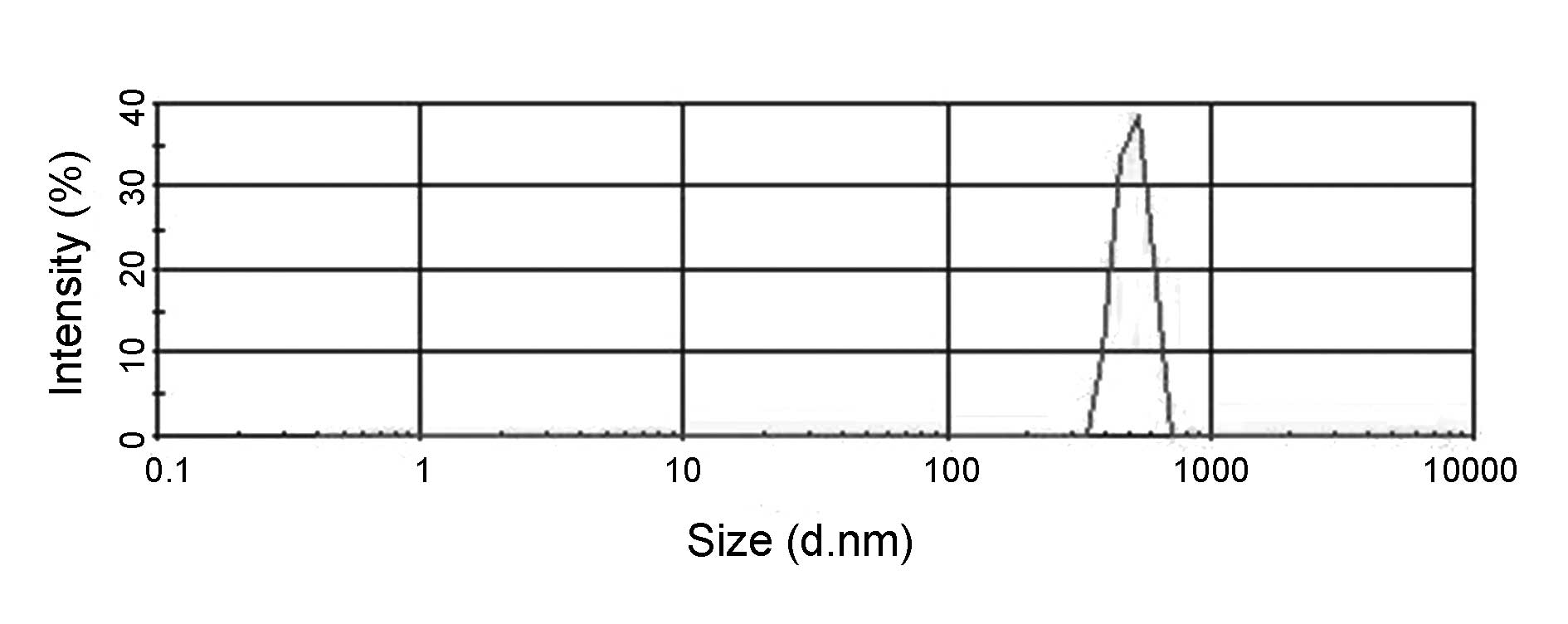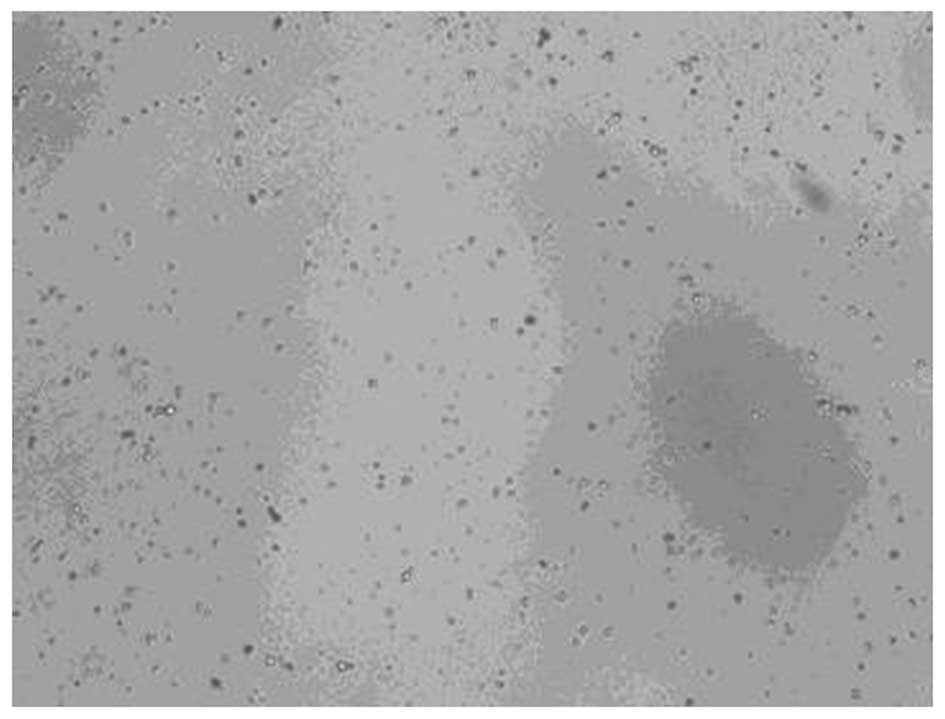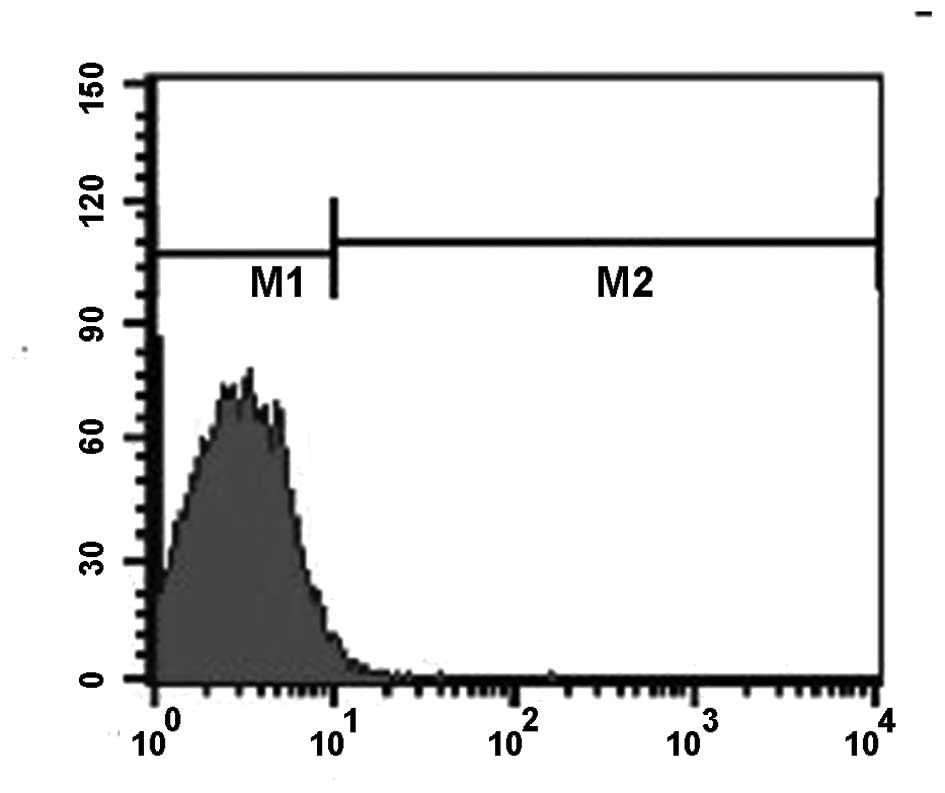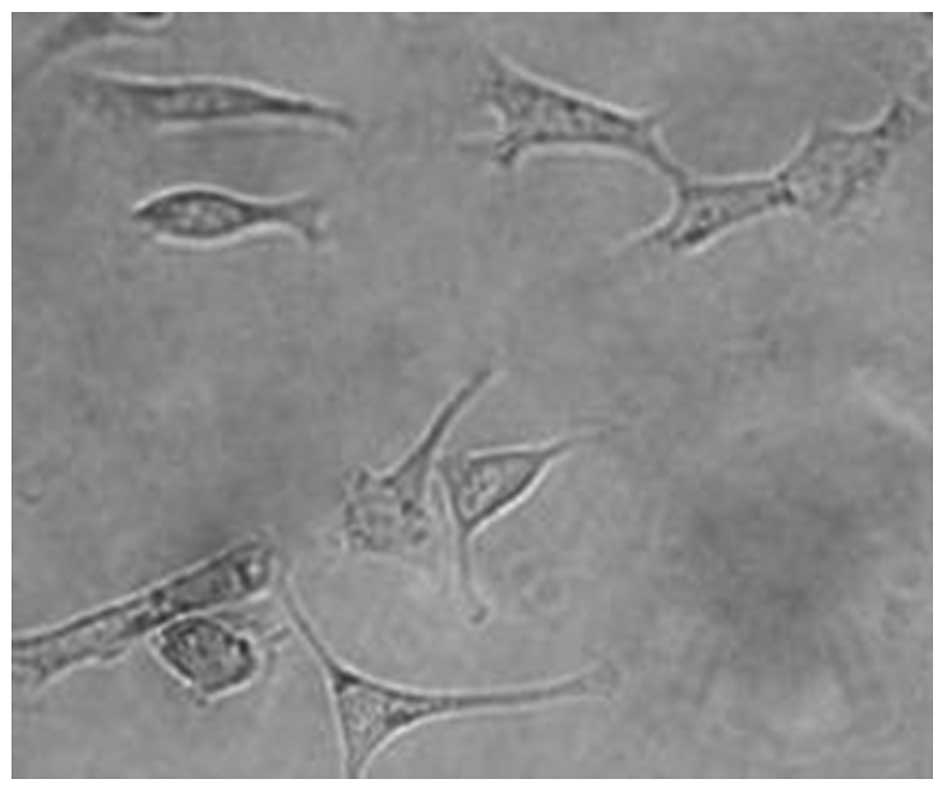|
1
|
Siegel R, Naishadham D and Jemal A: Cancer
statistics, 2012. CA Cancer J Clin. 62:10–29. 2012. View Article : Google Scholar
|
|
2
|
Lech A, Daneva T, Pashova S, et al:
Ovarian cancer as a genetic disease. Front Biosci (Landmark Ed).
18:543–563. 2013. View
Article : Google Scholar
|
|
3
|
Bast RC Jr, Skates S, Lokshin A and Moore
RG: Differential diagnosis of a pelvic mass: improved algorithms
and novel biomarkers. Int J Gynecol Cancer. 22(Suppl 1): S5–S8.
2012. View Article : Google Scholar : PubMed/NCBI
|
|
4
|
Leung F, Dimitromanolakis A, Kobayashi H,
Diamandis EP and Kulasingam V: Folate-receptor 1 (FOLR1) protein is
elevated in the serum of ovarian cancer patients. Clin Biochem.
46:1462–1468. 2013. View Article : Google Scholar : PubMed/NCBI
|
|
5
|
Li J, Chen H, Mariani A, et al: HE4
(WFDC2) Promotes Tumor Growth in Endometrial Cancer Cell Lines. Int
J Mol Sci. 14:6026–6043. 2013. View Article : Google Scholar : PubMed/NCBI
|
|
6
|
Ferraro S, Braga F, Lanzoni M, Boracchi P,
Biganzoli EM and Panteghini M: Serum human epididymis protein 4 vs
carbohydrate antigen 125 for ovarian cancer diagnosis: a systematic
review. J Clin Pathol. 66:273–281. 2013. View Article : Google Scholar : PubMed/NCBI
|
|
7
|
Azzam AZ, Hashad DI and Kamel NA:
Evaluation of HE4 as an extrabiomarker to CA125 to improve
detection of ovarian carcinoma: is it time for a step forward? Arch
Gynecol Obstet. 288:167–172. 2013. View Article : Google Scholar : PubMed/NCBI
|
|
8
|
Lenhard M, Stieber P, Hertlein L, et al:
The diagnostic accuracy of two human epididymis protein 4 (HE4)
testing systems in combination with CA125 in the differential
diagnosis of ovarian masses. Clin Chem Lab Med. 49:2081–2088. 2011.
View Article : Google Scholar : PubMed/NCBI
|
|
9
|
Hamed EO, Ahmed H, Sedeek OB, Mohammed AM,
Abd-Alla AA and Abdel Ghaffar HM: Significance of HE4 estimation in
comparison with CA125 in diagnosis of ovarian cancer and assessment
of treatment response. Diagn Pathol. 8:112013. View Article : Google Scholar : PubMed/NCBI
|
|
10
|
Varga D, Deniz M, Schwentner L and
Wiesmüller L: Ovarian cancer: in search of better marker systems
based on DNA repair defects. Int J Mol Sci. 14:640–673. 2013.
View Article : Google Scholar : PubMed/NCBI
|
|
11
|
Arits AH, Stoot JE, Botterweck AA, Roumen
FJ and Voogd AC: Preoperative serum CA125 levels do not predict
suboptimal cytoreductive surgery in epithelial ovarian cancer. Int
J Gynecol Cancer. 18:621–628. 2008. View Article : Google Scholar : PubMed/NCBI
|
|
12
|
Deshpande N, Ren Y, Foygel K, Rosenberg J
and Willmann JK: Tumor angiogenic marker expression levels during
tumor growth: longitudinal assessment with molecularly targeted
microbubbles and US imaging. Radiology. 258:804–811. 2011.
View Article : Google Scholar
|
|
13
|
Willmann JK, Kimura RH, Deshpande N, Lutz
AM, Cochran JR and Gambhir SS: Targeted contrast-enhanced
ultrasound imaging of tumor angiogenesis with contrast microbubbles
conjugated to integrin-binding knottin peptides. J Nucl Med.
51:433–440. 2010. View Article : Google Scholar
|
|
14
|
Barua A, Bitterman P, Bahr JM, et al:
Detection of tumor-associated neoangiogenesis by Doppler
ultrasonography during early-stage ovarian cancer in laying hens: a
preclinical model of human spontaneous ovarian cancer. J Ultrasound
Med. 29:173–182. 2010.
|
|
15
|
Xing Z, Wang J, Ke H, et al: The
fabrication of novel nanobubble ultrasound contrast agent for
potential tumor imaging. Nanotechnology. 21:1456072010. View Article : Google Scholar : PubMed/NCBI
|
|
16
|
Rapoport NY, Nam KH, Gao Z and Kennedy A:
Application of Ultrasound for Targeted Nanotherapy of Malignant
Tumors. Acoust Phys. 55:594–601. 2009. View Article : Google Scholar : PubMed/NCBI
|
|
17
|
Krupka TM, Solorio L, Wilson RE, Wu H,
Azar N and Exner AA: Formulation and characterization of echogenic
lipid-Pluronic nanobubbles. Mol Pharm. 7:49–59. 2010. View Article : Google Scholar : PubMed/NCBI
|
|
18
|
Brigger I, Dubernet C and Couvreur P:
Nanoparticles in cancer therapy and diagnosis. Adv Drug Deliv Rev.
54:631–651. 2002. View Article : Google Scholar : PubMed/NCBI
|
|
19
|
Anderson CR, Hu X, Zhang H, et al:
Ultrasound molecular imaging of tumor angiogenesis with an integrin
targeted microbubble contrast agent. Invest Radiol. 46:215–224.
2011. View Article : Google Scholar : PubMed/NCBI
|
|
20
|
Xing W, Zhigang W, Bing H, et al:
Targeting an ultrasound contrast agent to folate receptors on
ovarian cancer cells: feasibility research for ultrasonic molecular
imaging of tumor cells. J Ultrasound Med. 29:609–614.
2010.PubMed/NCBI
|
|
21
|
Völker P, Gründker C, Schmidt O, Schulz KD
and Emons G: Expression of receptors for luteinizing
hormone-releasing hormone in human ovarian and endometrial cancers:
frequency, autoregulation, and correlation with direct
antiproliferative activity of luteinizing hormone-releasing hormone
analogues. Am J Obstet Gynecol. 186:171–179. 2002.
|
|
22
|
Engel JB, Schally AV, Buchholz S, Seitz S,
Emons G and Ortmann O: Targeted chemotherapy of endometrial,
ovarian and breast cancers with cytotoxic analogs of luteinizing
hormone-releasing hormone (LHRH). Arch Gynecol Obstet. 286:437–442.
2012. View Article : Google Scholar : PubMed/NCBI
|
|
23
|
Yin T, Wang P, Zheng R, et al: Nanobubbles
for enhanced ultrasound imaging of tumors. Int J Nanomedicine.
7:895–904. 2012.PubMed/NCBI
|
|
24
|
Reches M and Gazit E: Biological and
chemical decoration of peptide nanostructures via biotin-avidin
interactions. J Nanosci Nanotechnol. 7:2239–2245. 2007. View Article : Google Scholar : PubMed/NCBI
|
|
25
|
Bayer EA and Wilchek M: Avidin-biotin
technology: preparation of avidin conjugates. Methods Mol Biol.
10:143–148. 1992.PubMed/NCBI
|
|
26
|
Oeffinger BE and Wheatley MA: Development
and characterization of a nano-scale contrast agent. Ultrasonics.
42:343–347. 2004. View Article : Google Scholar : PubMed/NCBI
|
|
27
|
Saxer T, Zumbuehl A and Müller B: The use
of shear stress for targeted drug delivery. Cardiovasc Res.
99:328–333. 2013. View Article : Google Scholar : PubMed/NCBI
|
|
28
|
Tan J, Shah S, Thomas A, Ou-Yang HD and
Liu Y: The influence of size, shape and vessel geometry on
nanoparticle distribution. Microfluid Nanofluidics. 14:77–87. 2013.
View Article : Google Scholar : PubMed/NCBI
|
|
29
|
Diaz-López R, Tsapis N, Santin M, et al:
The performance of PEGylated nanocapsules of perfluorooctyl bromide
as an ultrasound contrast agent. Biomaterials. 31:1723–1731.
2010.PubMed/NCBI
|
|
30
|
Morag E, Bayer EA and Wilchek M:
Reversibility of biotin-binding by selective modification of
tyrosine in avidin. Biochem J. 316:193–199. 1996.PubMed/NCBI
|
|
31
|
Wang W, Liu GJ, Xie XY, et al: Development
and evaluation of lipid microbubbles targeted to
alpha(v)beta(3)-integrin via biotin-avidin bridge. J Microencapsul.
29:177–184. 2012. View Article : Google Scholar : PubMed/NCBI
|
|
32
|
Klibanov AL: Ligand-carrying gas-filled
microbubbles: ultrasound contrast agents for targeted molecular
imaging. Bioconjug Chem. 16:9–17. 2005. View Article : Google Scholar : PubMed/NCBI
|
|
33
|
Klibanov AL: Ultrasound molecular imaging
with targeted microbubble contrast agents. J Nucl Cardiol.
14:876–884. 2007. View Article : Google Scholar : PubMed/NCBI
|


















